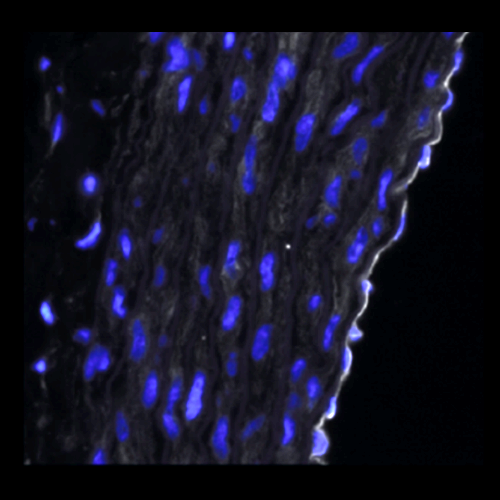Sex-difference in expression and function of beta-adrenoceptors in macrovessels: role of the endothelium.
Estrogen modulates adrenergic reactivity of macrovessels, resulting in weaker α-adrenergic vasoconstriction in females than males. However, the mechanisms governing this important sex-specific difference are not well understood. We hypothesized that vessels of females express more dilatory β-adrenoceptors, which counteract constrictive effects of α-adrenoceptors. This hypothesis was tested using aortas of normotensive (WKY) and hypertensive rats (SHR), along with human mammary artery. Selective blockade of β1 (CGP20712) or β3 (SR59230A), but not β2 (ICI118,551) adrenoceptors, greatly increased α-adrenergic constriction (norepinephrine) of aorta in female SHRs, but not in male SHRs at 12 weeks of age. Consistently, the selective β1/β2 (isoproterenol) and β3-adrenergic (BRL37344) relaxation was stronger in female SHRs than in males. Removal of endothelium and use of L-NMMA abolished sex-difference in α-adrenergic constriction and β-adrenergic relaxation. Immunostainings revealed endothelial localization of β1- and β3-adrenoceptors. mRNA levels of aortic β1- and β3-, but not β2-adrenoceptors were markedly higher in female than in male SHRs. The sex-specific differences in α-adrenergic constriction and β-adrenoceptor mRNA levels were age-dependent, predominantly present up to 29 weeks and disappeared at 36 weeks of age. The sex-specific difference was not strain-dependent and was similarly present in normotensive WKY rats. Human mammary artery of women showed a weaker α-adrenergic constriction than arteries of men. This sex-specific difference was prominent at 45-65 years and disappeared with aging. Our results convincingly demonstrate that female macrovessels express more dilatory β1- and β3-adrenoreceptors than male vessels with a predominant endothelial localization. This sex-specific difference is functionally relevant in young adults and is attenuated with aging

- Basic Res Cardiol. 2017 May;112(3):29
- 2017
- Cell Biology
- 28389717
- PubMed
Enabled by:
